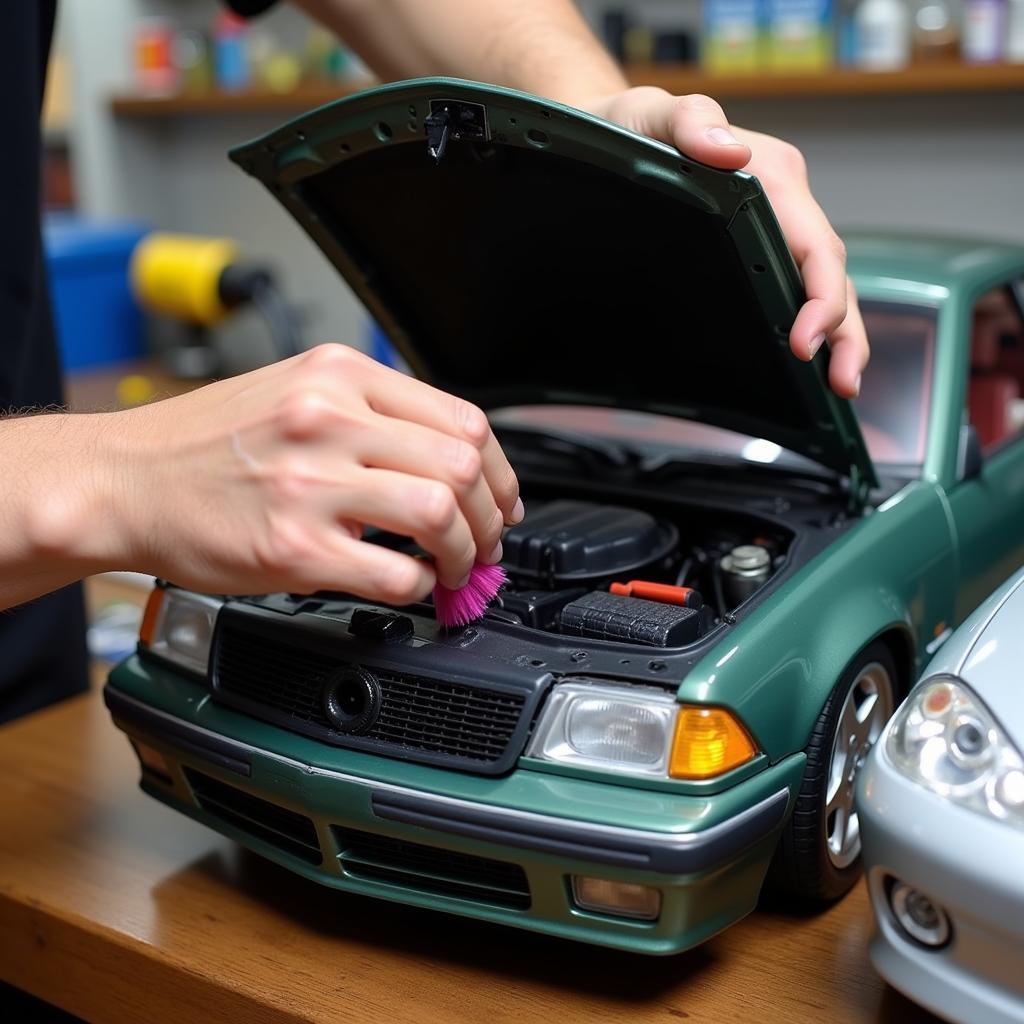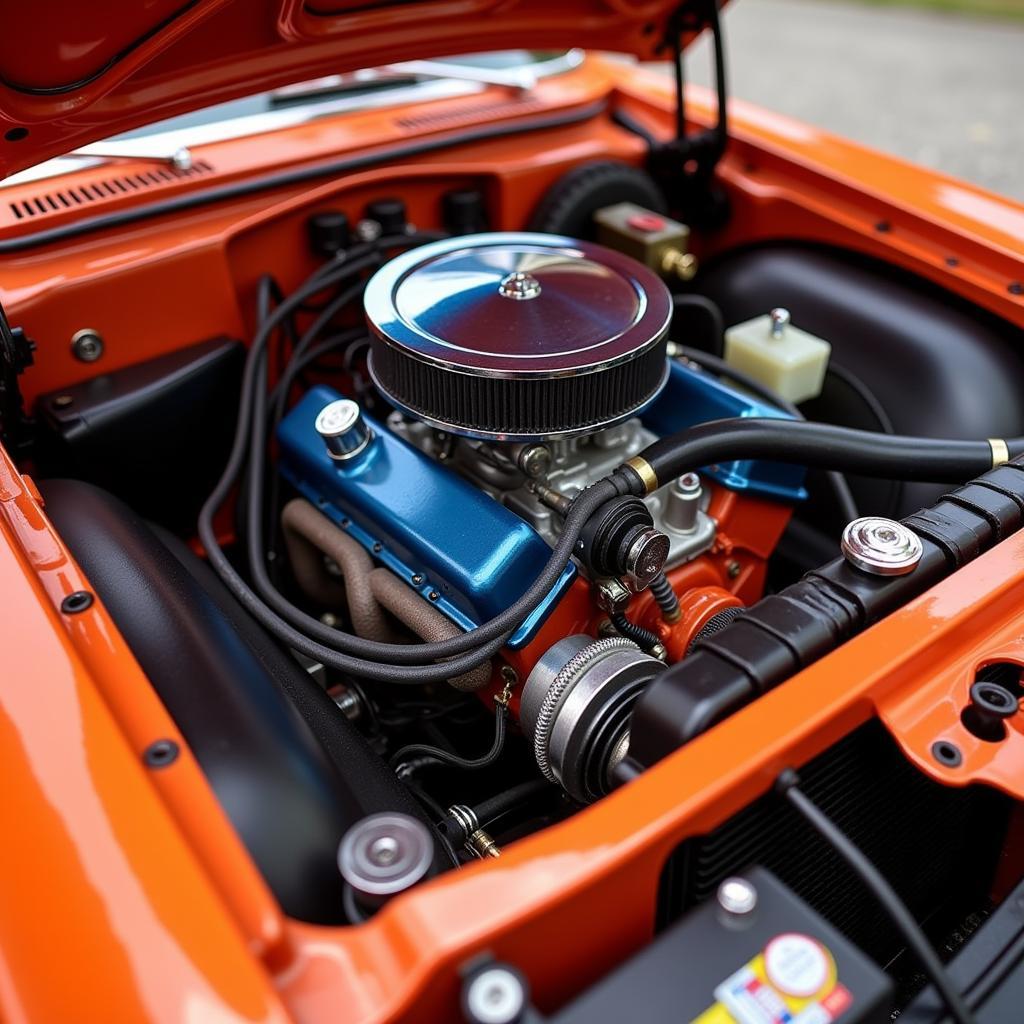Detailing the engine bay of a model car requires a delicate touch and specialized techniques. It’s a crucial step for achieving a concours-level finish or simply enhancing the realism of your miniature masterpiece. This guide will walk you through the process, offering tips and techniques to achieve a showroom-worthy engine bay. We’ll cover everything from prepping the area to applying the final touches, ensuring your model car looks its absolute best.
After cleaning the model car’s body, detailing the engine bay often requires specific tools and products due to its intricate details and delicate parts. A well-detailed engine bay not only enhances the overall aesthetic appeal but also adds a touch of realism. It showcases the builder’s attention to detail and commitment to accuracy. Are you ready to take your model car to the next level? Let’s dive in! Just after you’ve perfected your a class car detailing, why not try this out?
Preparing the Engine Bay for Detailing
Before diving into the detailing process, proper preparation is key. This involves carefully cleaning the engine bay to remove any dust, debris, or residue left from the manufacturing process. A soft-bristled brush, such as a makeup brush or a specialized model detailing brush, is ideal for this task. Use gentle strokes to avoid damaging delicate parts. For stubborn grime, consider using a mild cleaning solution specifically designed for model cars.
Cleaning Techniques for Delicate Engine Parts
When cleaning intricate engine parts, precision is crucial. Cotton swabs moistened with a cleaning solution can reach tight spaces and crevices. For painted areas, avoid using harsh chemicals that could strip the paint. Instead, opt for gentle cleaning agents. Remember to allow the engine bay to dry completely before moving on to the next step.
 Cleaning a Model Car Engine Bay with a Soft Brush
Cleaning a Model Car Engine Bay with a Soft Brush
Painting the Engine Bay
Once the engine bay is clean and dry, you can begin the painting process. If the model kit requires painting certain engine components, choose the appropriate paint type, whether enamel, acrylic, or lacquer. Thin coats are essential to prevent clumping and ensure even coverage. A fine-tipped brush or an airbrush will provide the best control and precision for detailed work.
Achieving a Realistic Finish with Paint
To create a realistic engine bay, pay attention to the details. Research the actual engine of the car you’re modeling to ensure accuracy in color and finish. Consider using weathering techniques, such as dry brushing or washes, to simulate wear and tear, adding a touch of authenticity to your model. If you’re looking to improve your how to car detailing business, understanding these miniature techniques can translate to real-world applications.
Detailing and Finishing Touches
After the paint has dried completely, you can add the finishing touches that bring your model engine bay to life. This may include applying decals, adding small wires and hoses, or using weathering powders to create a more realistic look.
Adding Realism with Decals and Weathering
Decals can add significant detail to your model engine bay. Apply them carefully, ensuring they are positioned correctly and adhere smoothly. Weathering powders can simulate dirt, grime, and other effects of age and use. A light dusting can make a big difference in the overall realism of your model. Thinking about trading in your car? A clean engine bay can make a difference. Check out our guide on should you detail car before trading in.
“Attention to detail is paramount when detailing a model car engine bay,” says renowned model builder, James Carter. “Even the smallest additions can significantly enhance the realism and overall impression.”
Conclusion
Detailing the paint engine bay on a model car is a rewarding process that elevates the entire model. By following these steps, you can achieve a stunningly realistic and detailed engine bay, showcasing your skill and dedication. Remember to take your time, focus on precision, and enjoy the process of bringing your miniature masterpiece to life. How often do you detail your real car? Perhaps our article on how often to detail car can help.
 A Beautifully Detailed Model Car Engine Bay
A Beautifully Detailed Model Car Engine Bay
“The engine bay is often the heart of a model car, and detailing it properly brings the entire model to life,” adds Amelia Davis, a leading expert in model car restoration. “It’s a testament to the builder’s passion and artistry.” Don’t forget to check out our guide on what to use to remove adhesive from car detailing if you encounter any sticky situations.
FAQ
- What type of paint is best for model car engine bays? Enamel, acrylic, and lacquer paints are all suitable, depending on your preference and the specific model.
- How can I remove excess paint from a model car engine bay? A cotton swab dipped in thinner can carefully remove unwanted paint.
- What are weathering powders used for? Weathering powders simulate dirt, grime, and other effects of age, adding realism.
- Where can I find decals for my model car engine bay? Model car shops and online retailers offer a wide variety of decals.
- What tools are essential for detailing a model car engine bay? Fine-tipped brushes, cotton swabs, and specialized detailing tools are recommended.
- How can I prevent paint from clumping in the engine bay? Apply thin coats of paint, allowing each coat to dry completely before applying the next.
- What is the best way to clean a model car engine bay before painting? A soft-bristled brush and a mild cleaning solution are ideal for cleaning the engine bay.
Need help? Contact us via WhatsApp: +1(641)206-8880, Email: [email protected]. We have a 24/7 customer service team.

Leave a Reply